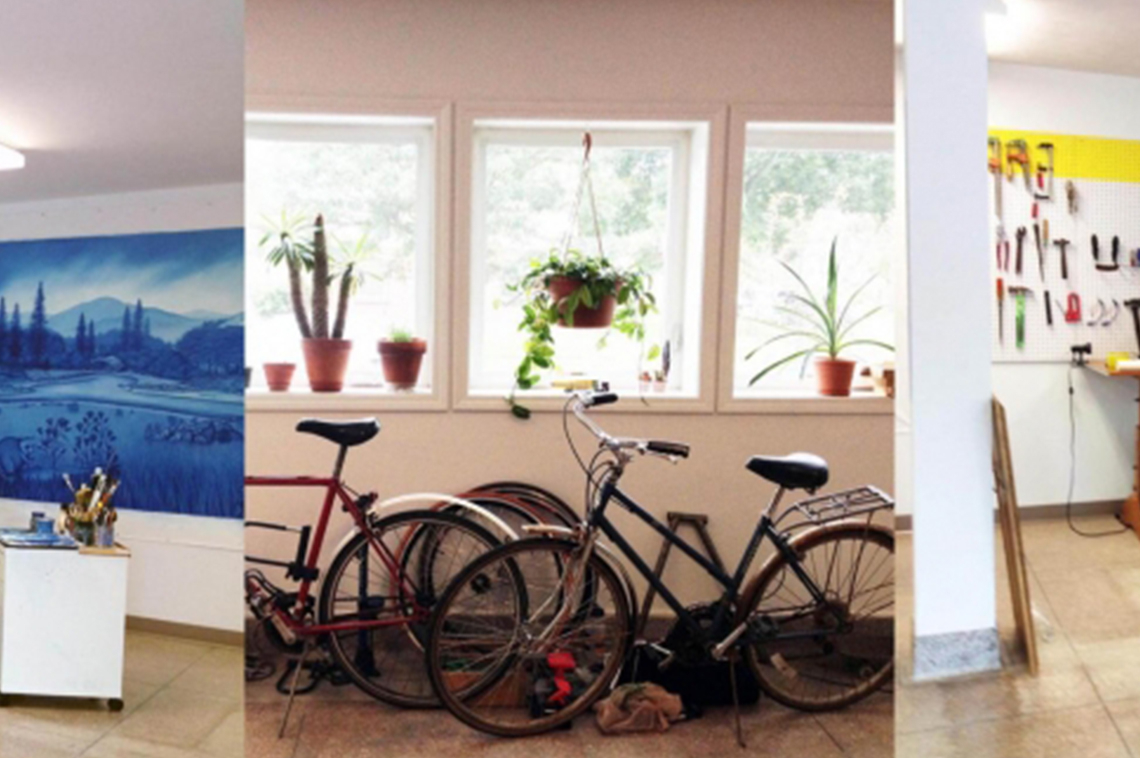
Those who have been following ArtPlace’s progress closely know that we talk about our work as investing in arts-based strategies to help achieve place-based outcomes in order to reposition arts and culture as a core sector of community planning and development. In order to make sure that we are covering the entire field of community planning and development, we have identified ten sectors that generally cover that terrain.
At our annual Grantee Summit that we hosted in Philadelphia in May, we organized our breakout sessions around these ten sectors, featuring our grantees working in those areas in conversation with an expert from the field.
This post is the second in a ten-part series that continues these conversations.
Today’s post summarizes a conference call we hosted with Pat Brown of the Broad Avenue Project (Memphis, TN) and Maarten Jacobs of the SALT District (Syracuse, NY).
According to the International Economic Development Council, "no single definition incorporates all of the different strands of economic development." For the purposes of our Community Development Matrix, we focus on the actions that stakeholders and policy makers take to grow the economy of a municipality or region, specifically around retaining and expanding existing businesses, growing new businesses, and attracting businesses to relocate. Some definitions of economic development also include the creation of jobs, and we separate job creation into its own sector: Workforce Development.
One of the more basic examples of how the arts can contribute to economic development is foot traffic. If you place a performing arts venue on Main Street, a significant portion of concert goers will have dinner at a nearby restaurant. If you place a gallery along the same stretch, then those hours of increased pedestrian activity expand as gallery visitors spend time shopping in the neighborhood as part of their afternoon. If you layer in artist live-work space, you create the opportunity for a boost in activity at all times of day as resident artists frequent coffee shops in the morning or meet friends over drinks in the evening. This post looks beyond foot traffic at a few other ways that the arts and artists interact with economic ecosystems.
Artists can help drive more effective real estate development. The conversation began with real estate and its out-sized impact on local economies. Having both Maarten and Pat on this call provided an interesting juxtaposition, as they come from different ends of a spectrum. Maarten works to revitalize Syracuse, NY's Near Westside neighborhood and wants to foster private sector investment as a complement to significant public and philanthropic support. Pat is focused on convincing Memphis, TN's predominantly private-sector stakeholders along Broad Ave. to consider more public-minded and philanthropic initiatives that expand beyond traditional real estate practices. They discussed how bankers or developers base their ideas of what to do next on what has already been done. Without connecting with communities, however, developers run the risk of overbuilding in the wrong way. The arts can be a valuable tool in engaging communities to help determine the demand for future amenities, which in turn helps promote more efficient economies. Artists can add a unique perspective in imagining new and innovative solutions to building within communities. There was also consensus that younger developers are often not simply looking to maximize profit, but instead hunt for creative ways to differentiate their projects. This is another potential opportunity for the arts realm.
The arts can be a valuable tool in engaging communities to help determine the demand for future amenities, which in turn helps promote more efficient economies.
Artist entrepreneurs could benefit from more sophisticated support systems. Another link between the arts and economic development is artist entrepreneurs, including things like pop-up brick and mortar shops and makers seeking access to new markets. “We've had good programs to activate storefronts, but I don't see this training or transitioning of artists into business owners,” said Pat. “Artists have ended up not being successful because they didn't realize what it took to be a business owner. You are now the janitor as well as the president of your own business.” As entrepreneurs, artists often end up dealing with issues for which they haven’t been prepared, ranging from high-level business strategy to daily maintenance. In many cases, having to negotiate these new issues ends up both impeding their long-term success and detracting from their creative work. What would the partnerships or relationships look like to help bridge this gap in experience/aptitude while not overburdening artists? How can educational systems and professional development programs better prepare these artists for entrepreneurship?
How much is enough? The conversation ended on economic displacement. How do we get to a satisfactory level that feels good and interesting without the destruction of the neighborhood? Without careful attention and intentional public policy, economic development can benefit members of a community unequally, which in turn can uproot residents, businesses, and power structures alike. Maarten stressed that project timelines can often be a culprit in preventing this balance, “how do you start making sure that you have these conversations [about community change] early enough so that you’re not suddenly blindsided by the momentum of a development that can quickly take over?”
We would love to hear from others who are exploring these questions in their communities. How does your community support artists as business owners? How does economic development where you live take advantage of momentum while supporting existing culture and community? What models have you seen for artists to more substantively collaborate on real estate development projects?





